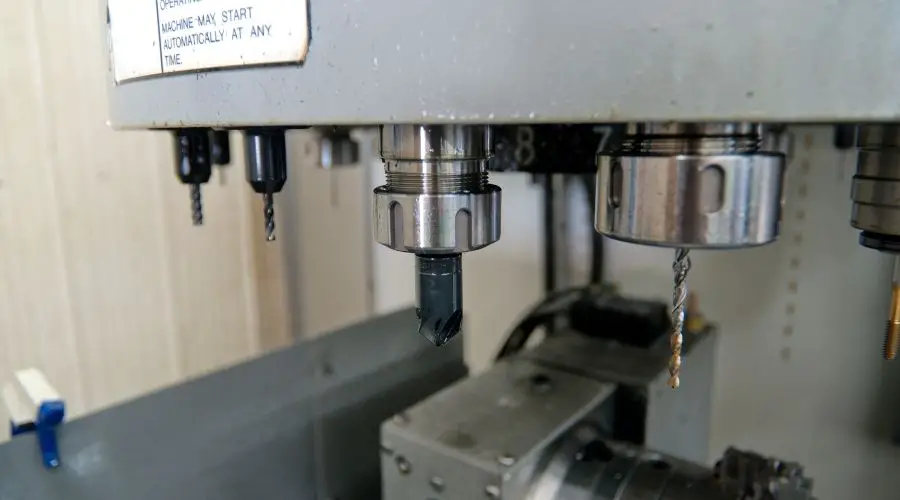Your CNC machine is as good as the tools that it uses. And while tooling impacts the productivity and output potential of the machine, it also governs the overall machine life.
However, quite often, it is noticed that operators either underutilize a tool or overutilize it. In the case of the former, the tool gets replaced even before the end of life, thereby decreasing the value proposition.
Alternatively, overutilization results in parts scrapping and downtime, which affects the machine’s productivity.
While there is no way to nullify wear and tear, which leads to the end of the tool life, there are a few proactive ways through which one can lengthen it.
In this post, we will look at the concept of tool life and how one can improve it to get maximum value from their CNC machine.
What is Tool Life?
Tool life corresponds to the usefulness of a machine tool. One may think that it is marked by the duration between when it comes into use and when it breaks.
However, it is, in fact, the period marked by the actual cutting time, following which the tool experiences wear and tear and eventually goes out of use.
In other words, once the tool is worn out to the point where the CNC machining process is yielding out-of-spec jobs, it marks the end of the tool life. And so, tool life can also be defined as the measure of the good parts that the tool can produce.
Factors That Influence Tool Life
Tool wear is not uniform throughout the life of the tool. Typically, it is rapid in the initial stages, followed by a period of uniformity and a final accelerated rate of wear. The factors contributing to such variability are:
- Cutting Rate
When it comes to CNC machining, it is easy to misconstrue faster as better or more efficient. But that is not universally true.
The cutting rate depends on the material of the workpiece, its hardness, design complexity, and more. As such, the operator must pick an optimum cutting rate accordingly.
- Workpiece Hardness
Naturally, tools that cut hard materials will wear out faster and easier than those employed for cutting softer materials.
Plus, different workpiece materials can result in different types of wear and tear.
For instance, soft materials (like aluminum) can result in built-up edges, while hard materials (like titanium) can cause catastrophic failure of the milling machine.
- Tool Materials
Apart from the workpiece, the material of the tool also has a bearing on the tool life. It possesses certain performance characteristics that make it more suitable for specific applications.
For example, some tools are reinforced by hardening using materials like titanium to make them more durable.
- Feed Rate and Cut Depth
Much like the cutting rate, the feed rate and the cut depth also need to be optimized in accordance with the tool being used and the material being worked on, and their corresponding properties.
- Type of CNC Machining
Some cutting tools may be used for finishing and polishing, while others can be used for cutting, milling, boring, etc.
As such, the aggressiveness of the required CNC machining action determines the wear and tear experienced by the tool and the resulting impact on the tool life.
How to Improve Tool Life?
While every tool has a prescribed tool life and will experience wear and tear at some point, the tool life can be elongated in the following ways:
- Using the Optimum Feed and Speeds
As seen above, the feed rate and the cut-rate have a direct relation with the tool life. As such, following the prescribed feed and speed settings can extend the tool’s life.
- Use of Cutting Fluid
The combination of metal-to-metal contact and resultant friction generates heat that can cause tool failure. In such a situation, using the right cutting fluid in the right amount can improve tool life through lubrication and heat transfer.
- Avoid Recutting Chips
Chipping is the process through which metal material is removed from the workpiece after CNC machining. It also carries away some of the heat generated. However, recutting chips can cause tool wear, such as flank wear and crater wear, amongst other things.
- Pick the Right Tool
The CNC machine operator must have a fair understanding of choosing the right tool, considering factors like the workpiece material, design, accuracy, tolerance, etc. As such, matching these specifics with the capabilities of the tool will increase the tool’s life.
Concluding Thoughts
Active tool life monitoring can allow you to gain more value from your tool and CNC machine.
There are several ways to measure, quantify, and track your tool health.
Taylor’s Tool Life Equation is a great starting point considering that it takes into account all the factors that we have discussed above.
Once you have mastered the art of measuring your tool life and optimizing it, you can avoid catastrophic failures, cut down on possible downtime, maximize tool life, and produce high-quality jobs.
About the Author:
Peter Jacobs

Peter Jacobs is the Senior Director of Marketing at CNC Masters. He is actively involved in manufacturing processes and regularly contributes his insights for various blogs in CNC machining, 3D printing, rapid tooling, injection molding, metal casting, and manufacturing in general.

